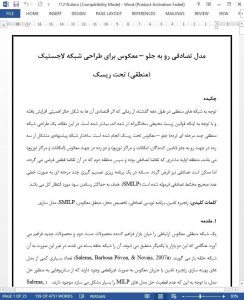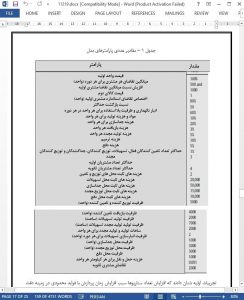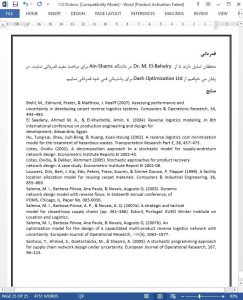Abstract
Attention with reverse logistics networks has increased during the last decade since their economic impact has been increasingly important and as environmental legislation has been becoming stricter. In this paper, A multi-period multi-echelon forward–reverse logistics network design under risk model is developed. The proposed network structure consists of three echelons in the forward direction, (suppliers, facilities and distribution centers) and two echelons, in the reverse direction (disassembly, and redistribution centers), first customer zones in which the demands are stochastic and second customer zones in which the demand is assumed to be deterministic, but it may also assumed to be stochastic. The problem is formulated in a stochastic mixed integer linear programming (SMILP) decision making form as a multi-stage stochastic program. The objective is to maximize the total expected profit.
1. Introduction
A reverse logistics network establishes a relationship between the market that releases used products and the market for ‘‘new” products. When these two markets coincide, then it is called a closed loop network, otherwise it is called an open loop network (Salema, Barbosa Póvoa, & Novais, 2007a). Very few optimization models for the design of supply chains with reverse flows are available in literature under uncertainty using scenarios to solve the model as uncertainty makes MILP models very hard to solve (Salema, Barbosa Póvoa, & Novais, 2005).
7. Conclusion
From the previous study, the following conclusions can be derived.
The proposed model is successful in designing forward–reverse logistics networks while considering multi-period stochastic demand with three echelons (suppliers, facilities and distributors) in the forward direction and two echelons (disassemblies and redistributors) in the reverse direction. It can only be used for single item, single product problems. The model is flexible to solve larger problems; however, it requires more powerful hardware since the number of scenarios increases exponentially with the increase of the number of periods.
The application of the proposed model showed that the total expected profit is directly affected by demand mean and return ratio for a given capacity of the network. Only integer number of batches can be transported during a period which limits the application of the model.











